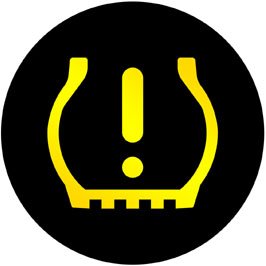 True or false, your tires support the weight of your
vehicle? Kind of a trick question, but it’s actually the air
pressure inside your tires that supports the majority of your
vehicle’s weight. That’s why it is so essential to maintain the
proper tire pressure. Your tires have several important functions
to provide including traction, handling, braking as well as
delivering a comfortable ride. Without the necessary tire pressure,
they may not perform these tasks adequately or safely.
True or false, your tires support the weight of your
vehicle? Kind of a trick question, but it’s actually the air
pressure inside your tires that supports the majority of your
vehicle’s weight. That’s why it is so essential to maintain the
proper tire pressure. Your tires have several important functions
to provide including traction, handling, braking as well as
delivering a comfortable ride. Without the necessary tire pressure,
they may not perform these tasks adequately or safely.
This time of year, we are seeing dramatic temperature drops. Parts of Western New York and Northern PA will experience -10 degree temperatures in the next few days. Wind chill temperatures may be as low as -30 or more. This is in contrast to 40 degree weather just a day prior. In these cold climates it’s important to routinely check air pressure. In fact, many people may see in an increase in the low tire pressure signals on their dashboard. This is normal, but should be addressed to maintain proper vehicle safety.
The rule of thumb is for every 10° Fahrenheit change in air temperature, your tire’s inflation pressure will change by about 1 psi (up with higher temperatures and down with lower). In other words, if it were 40 degrees yesterday and -2 degrees today, you may experience a 4-5 psi loss in tire pressure. This may be enough to activate your low air pressure light.
Not only is driving around with low tire pressure dangerous, it can damage your tires. It puts added stress on the sidewall which may cause them to wear quicker. Your goal should be to drive safely and to extend the life of your tires by maintaining proper tire pressure. You should also check the air pressure of your spare tire – so it’s ready if you need it.
If you have any questions about tire pressure, or your low tire pressure light is on, please stop by any of our convenient locations.
